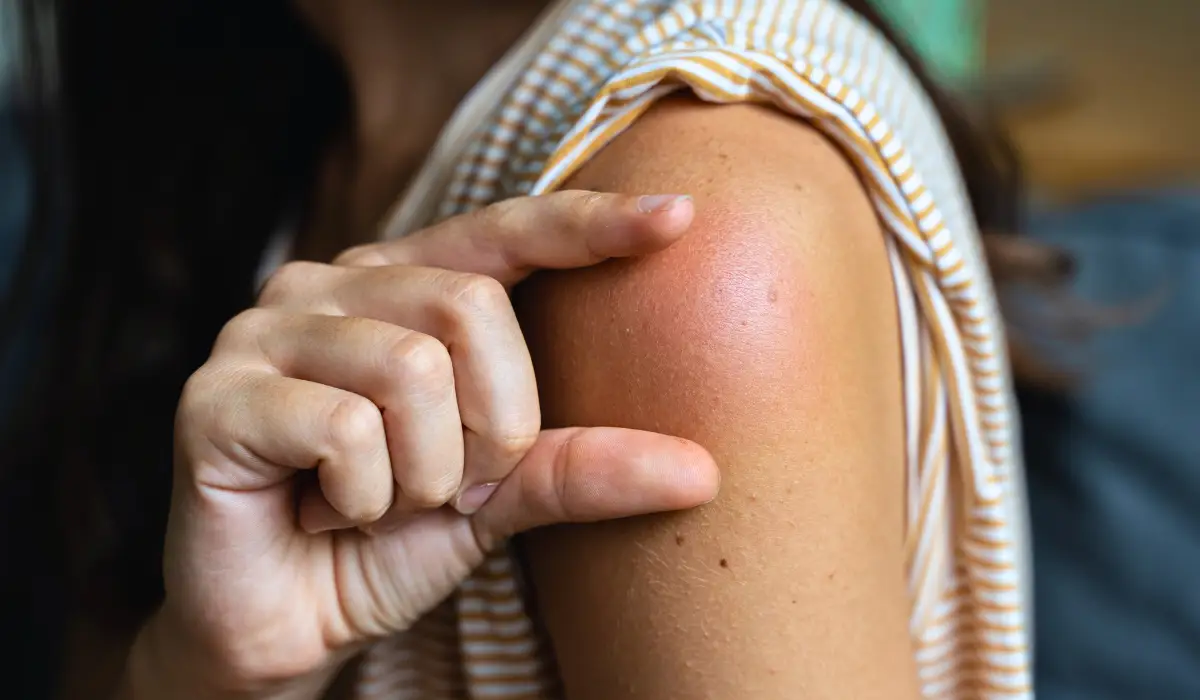Swelling is a common and natural response to an injury, but it can be concerning and uncomfortable. Understanding the duration of swelling and the factors that affect it is crucial for a smooth recovery. In this blog post, we’ll explore the symptoms of swelling, the variables that influence its duration, and when to seek medical attention.
Key Takeaways
- Swelling duration varies based on the type and severity of the injury and individual healing processes.
- The R.I.C.E method, medications, and physical therapy can help manage swelling and promote healing.
- Seek medical advice for persistent or excessive swelling, as it may indicate an underlying issue.
Symptoms of Swelling
After an injury, the body’s natural response is to send extra fluid to the affected area, causing swelling. Common signs of swelling include:
- Puffiness or enlargement of the injured area
- Skin that feels tight or stretched
- Pain or tenderness when touched
- The affected joint exhibits a reduction in its range of motion.
Swelling is typically a natural aspect of the healing process in most instances. However, excessive or prolonged swelling may require medical attention. If the swelling is accompanied by severe pain, redness, warmth, or fever, consult a healthcare professional promptly.
Factors Affecting Swelling Duration
The duration of swelling can vary significantly depending on several factors:
- Type and severity of injury: Minor injuries like sprains may cause swelling that lasts for a few days, while more severe injuries like fractures can result in swelling that persists for weeks or even months.
- Location of the injury: Swelling in areas with minimal soft tissue, such as the ankle or wrist, may subside more quickly than swelling in larger areas like the knee or hip.
- Individual differences in healing: Age, overall health, and genetics can all play a role in how quickly an individual’s body heals and reduces swelling.
Treatment Options For Swelling
To manage swelling and promote healing, several treatment options are available:
1. R.I.C.E method
Rest, Ice, Compression, and Elevation can help reduce swelling and pain. Apply ice to the affected area for 15-20 minutes every few hours, and keep the injured limb elevated above the heart level when possible.
2. Over-the-counter medications
Nonsteroidal anti-inflammatory drugs (NSAIDs) like ibuprofen can help reduce pain and inflammation. Be sure to adhere to the recommended dosage and seek advice from a healthcare professional if you have any concerns.
3. Physical therapy and rehabilitation exercises
Gentle exercises and stretches can help improve circulation, reduce stiffness, and promote healing. A physical therapist can develop a personalized plan based on your specific injury and needs.
When To Worry About Prolonged Swelling?
While some swelling is normal, there are instances when prolonged or excessive swelling may indicate a more serious issue:
- Signs of infection: If the swelling is accompanied by redness, warmth, or discharge, it may be a sign of infection. Promptly seek medical attention to prevent the spread of infection.
- Development of chronic conditions: In some cases, prolonged swelling can lead to chronic conditions like lymphedema, which occurs when the lymphatic system is damaged and unable to properly drain fluid.
- Impact on daily activities and quality of life: If swelling persists and interferes with your ability to perform daily tasks or enjoy activities, consult with a healthcare professional to discuss additional treatment options.
Preventing Swelling After an Injury
While not all injuries can be prevented, there are steps you can take to reduce your risk of swelling:
1. Proper warm-up and cool-down techniques: Before engaging in physical activity, take the time to properly warm up your muscles and joints. After exercising, cool down with gentle stretches to help prevent injury.
2. Using protective gear: When participating in sports or other physical activities, wear appropriate protective gear like helmets, padding, and supportive braces to minimize the risk of injury.
3. Listening to your body: Pay attention to your body’s signals and avoid overexertion. If you experience pain or discomfort, take a break and allow your body to rest and recover.
According to the National Institute of Arthritis and Musculoskeletal and Skin Diseases, “The body’s response to injury and inflammation is to send white blood cells and increased blood flow to the affected area. This can cause swelling that lasts for a few days to several weeks.”
Also Read: What Happens If Strep Throat Goes Untreated?
Conclusion
Swelling is a natural part of the healing process after an injury, but its duration can vary based on several factors. By understanding the symptoms of swelling, implementing appropriate treatment options, and taking steps to prevent injuries, you can support your body’s recovery and get back to your daily activities.
Remember, if you experience persistent or excessive swelling, don’t hesitate to seek medical advice. Healthcare professionals can provide personalized guidance and treatment plans to help you manage swelling and promote optimal healing. Prioritize rest and recovery, and trust your body’s innate ability to heal.
FAQ
Swelling from a minor sprain usually lasts for a few days to a week, while more severe sprains may cause swelling that persists for several weeks or longer.
Yes, applying ice packs to the affected area for 15-20 minutes every few hours can help reduce swelling and alleviate pain. Ensure that you wrap the ice pack in a thin towel to safeguard your skin.
If you experience severe pain, redness, warmth, or fever along with swelling, or if the swelling persists for more than a few days, consult with a healthcare professional promptly.
Yes, wearing compression garments like stockings or sleeves can help reduce swelling by promoting blood flow and preventing fluid buildup in the affected area. Be sure to choose the appropriate size and compression level for your needs.

